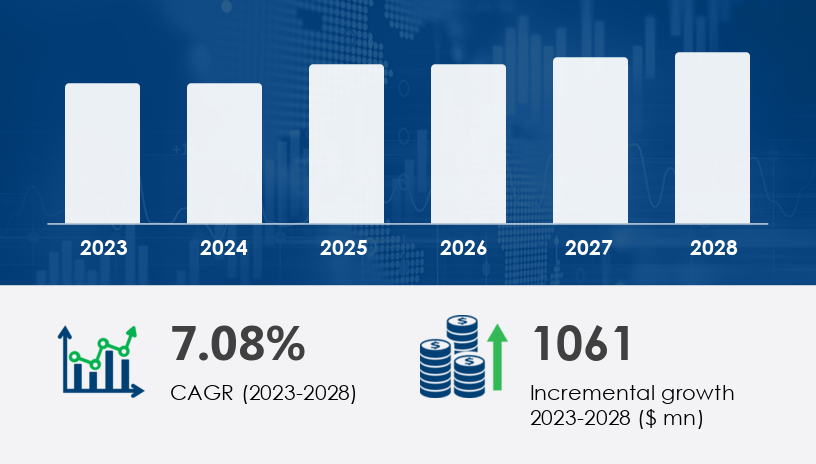The global 3D projector market is poised to expand by USD 1.06 billion from 2024 to 2028, growing at a compound annual growth rate (CAGR) of 7.08%. In this 2025 outlook and strategic guide, we break down the forces accelerating this growth, explore the leading technologies, and deliver expert-level insights into what this means for industries ranging from movie theaters to education and corporate presentations.
For more details about the industry, get the PDF sample report for free

The 3D projector market is evolving rapidly, driven by innovations in display technologies and diverse application areas. Key projector types such as DLP projector, LCD projector, and LCoS projector each offer distinct advantages in resolution quality, color accuracy, and grayscale performance, appealing to different consumer segments. With the rise in home theater setups, the demand for laser projector, LED projector, and 4K projector options has increased, especially models featuring Full HD, superior contrast ratio, and versatile throw ratio capabilities. The popularity of short-throw projector and ultra-short-throw devices also reflects a consumer shift toward compact setups. Devices designed for business projector and education projector use cases often prioritize high lumens output and ceiling mount or wall mount compatibility. Projection lens advancements and robust light source options contribute to overall performance, with modern models offering enhanced keystone correction, digital zoom, and extended lamp life to improve user experience and cost-efficiency.
3D projectors are transforming traditional classrooms into interactive learning environments. Fields like medicine, architecture, and engineering benefit immensely from 3D simulation.
“Education institutions are shifting toward immersive tech to meet modern learning styles,” notes a senior Technavio expert.
Cinema halls are adopting 3D systems to replace outdated film projectors, offering deeper realism and attracting modern audiences hungry for high-definition visuals.
Smart 3D projectors are increasingly powered by AI for automated optimization, and cloud-based streaming of 3D content is driving usage in both commercial and residential markets.
See What’s Inside: Access a Free Sample of Our In-Depth Market Research Report.
The DLP segment dominates due to its superior image quality, low pixelation, and adaptability. With some models featuring triple DLP chips (RGB), they offer professional-grade performance.
While LCD is budget-friendly and ideal for basic needs, LCoS (Liquid Crystal on Silicon) shines in niche applications with deeper blacks and less screen door effect, especially in simulation and training.
The global market is segmented into the following regions:
The APAC region leads global growth, accounting for 46% of total market expansion through 2028. Countries like China, India, and Japan are accelerating adoption due to:
Government-backed digital education initiatives
Surge in urban multiplexes and digital theaters
Massive corporate and IT sector growth fueling B2B demand
"India's startup ecosystem and China's media sector are key catalysts in the 3D revolution," explains a senior Technavio expert.
Modern 3D projectors are leveraging multiple-lens smartphone cameras to process 3D content directly. This has created opportunities for portable and personal 3D projection devices, ideal for gaming and small events.
Increased demand for compact, mobile units is reshaping the corporate space. From sales teams on the go to educators in remote locations, portable 3D projectors add a layer of flexibility unseen in traditional systems.
Enhanced viewer engagement
Realistic simulations
Wide industrial use (education, cinema, training)
Ongoing innovation in AI, cloud, and LCoS tech
High cost vs. traditional projectors
Requirement for 3D glasses
Brightness limitations in well-lit areas
Despite growth, several challenges persist:
Cost remains prohibitive for small businesses and schools.
Compatibility issues with certain content types.
Consumer hesitation due to need for 3D glasses and perceived complexity.
However, emerging technologies like laser light sources, hybrid lenses, and projection mapping are gradually addressing these hurdles.
Get more details by ordering the complete report
In the analysis of the 3D projector market, a focus on immersive experiences reveals the growing impact of stereoscopic projection technologies like active 3D and passive 3D, supported by accessories such as shutter glasses and polarized glasses. Compact and versatile portable projector models are gaining traction, especially those offering USB connectivity, HDMI input, and wireless projection features. The demand for smart projector and interactive projector solutions is also growing in both corporate and academic environments, driven by the need for seamless remote control and responsive interfaces. Essential internal components such as the image processor, optical engine, and cooling system play a critical role in maintaining consistent performance, especially in demanding settings like projection mapping. Specifications such as Ansi lumens, accurate audio output, and adaptable projection screen compatibility are increasingly influencing buyer preferences, cementing these features as core differentiators in competitive product offerings.
DLP will continue to dominate, but LCoS may gain traction in niche fields.
APAC's leadership in market growth is expected to strengthen due to tech-savvy consumers and institutional demand.
AI, AR/VR integration, and cloud support are next in line to reshape the competitive landscape.
Companies investing in affordable, portable solutions will unlock untapped SMB and education markets.
Invest in R&D for ultra-portable models with smart integration.
Target educational institutions and cinema chains in APAC through localized campaigns.
Bundle 3D content and glasses for consumer-friendly packages.
Leverage AI analytics to personalize user experience in commercial settings.
The 3D projector market is no longer a futuristic concept — it’s a critical, fast-evolving sector that serves the demands of digital transformation, immersive entertainment, and innovative learning. As prices decrease and features evolve, mass adoption is imminent.
Safe and Secure SSL Encrypted